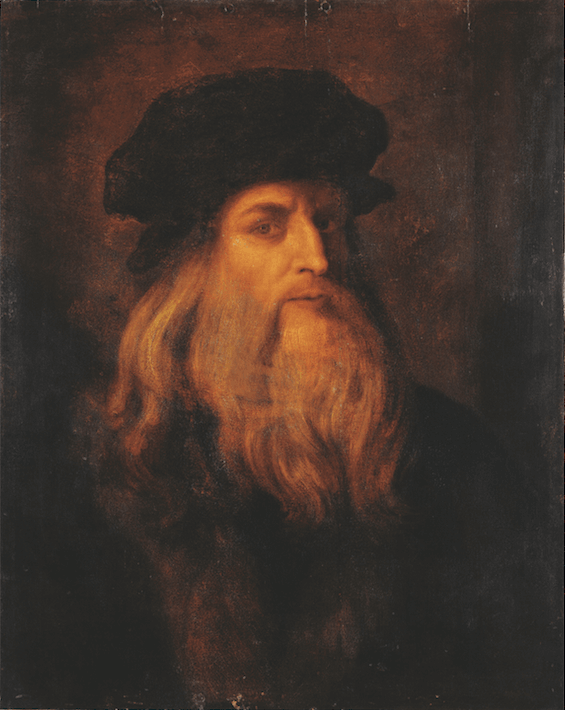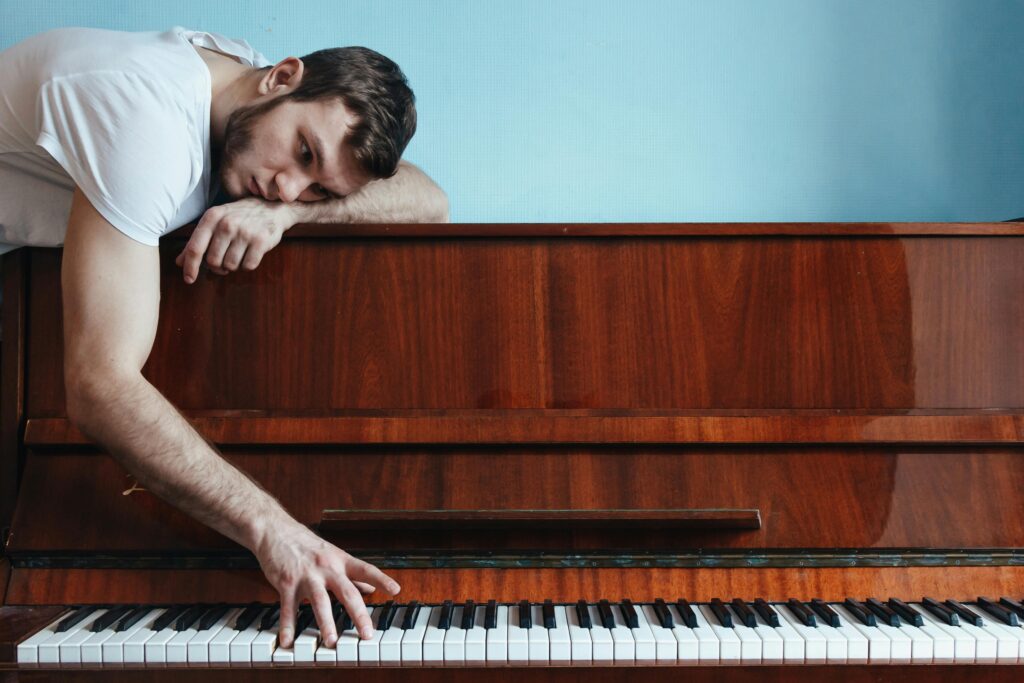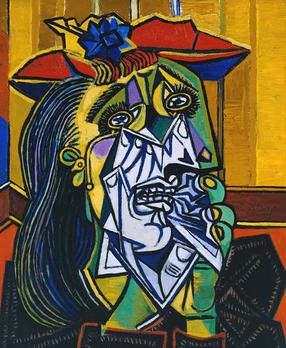What is art block? Define art block through the experiences of renowned artists in this insightful exploration. Discover how famous creators across various disciplines describe and overcome this universal creative challenge. Gain practical strategies and encouragement to push past your own creative barriers and reignite your artistic passion.
Introduction: The Universal Hurdle of Creatives – Art Block
In the lexicon of the creative world, ‘art block’ is a term that resonates across disciplines, a shared experience that binds the artistic community together. It’s the creative slowdown, the frustrating lull where inspiration dissipates and productivity grinds to a halt. This phenomenon isn’t a modern construct; it’s a timeless companion to the creative process, a recurring guest in the lives of those who seek to create.
Art block knows no boundaries. From painters to poets, sculptors to songwriters, the sudden absence of creative flow is a hurdle familiar to all. It is as prevalent as it is perplexing, often striking without warning and lingering without a set expiry. The muse becomes elusive, leaving even the most seasoned artists in a state of stagnation.
This article aims to delve into the heart of this creative conundrum by examining how some of the world’s most renowned artists have encountered, defined, and navigated their way through the mists of art block. Through their insights, we seek not only to understand the nature of this creative challenge but also to gather wisdom that might light the path for others who find themselves facing similar artistic impediments. Join us as we explore the contours of art block through the eyes of those who have stood face-to-face with it, understanding that within their interpretations lie the seeds of resurgence for us all.
Artists’ Defination on Art Block
Throughout history, some of the most celebrated artists have grappled with the phenomenon of art block, documenting their struggles and insights. Their stories not only provide a window into the artist’s soul but also offer solace in knowing that such creative lulls are not unique to the modern creator.

The Historical Lens Leonardo da Vinci, notorious for leaving works unfinished, often fell prey to prolonged periods of low productivity, which many now interpret as art block. In his notes, we find a man wrestling with his own expectations, a reflection of the creative challenges that span across centuries. Similarly, writer Samuel Taylor Coleridge described an “indefinite indescribable terror” at not being able to produce work he found meaningful, a sentiment that echoes the frustrations of many artists today.
The Contemporary Experience In the present day, the conversation around art block continues to evolve, as artists across different mediums describe it through varied lenses. A contemporary novelist may speak of the ‘white page syndrome’—a daunting blankness that awaits the strike of the keyboard. Visual artists might describe the lack of connection with their piece, a certain ‘flatness’ that fails to spark the dialogue between creator and creation.
Musicians have shared the silence that fills the room when melodies once fluid now seem to stutter and stop. Dancers, too, express moments when their body seems to forget the language of movement, rendering them still when they wish to flow.
Each definition, while unique in its articulation, conveys a universal truth—art block is an absence, a pause, a silence. Yet, it is within this very void that the potential for rediscovery exists. For many artists, the experience of art block is not merely an obstacle but a necessary phase of the creative process that demands reflection, introspection, and sometimes, transformation.
By examining both historical anecdotes and modern-day accounts, we see that art block is a shared journey of highs and lows, a rite of passage on the path to creative fulfillment. These insights from artists across time and disciplines provide a tapestry of experiences that underscore the complex yet universal nature of art block.
Common Themes Across Disciplines
While the manifestation of art block may vary from canvas to keyboard, stage to studio, there are common threads that unite creatives in their experience of this phenomenon. Across the vast landscape of artistic disciplines, certain patterns emerge, revealing the universal nature of the creative stall.

The Silence Before the Storm Artists across all mediums speak of a quietude that precedes the breaking of their creative block. For visual artists, it’s the stillness of the brush against the canvas, awaiting the hand to direct it. Writers talk of the hovering pen, dancers of the poised but unmoving body, and musicians of the silent instruments—all anticipating the surge of inspiration that will propel them into action. This shared silence is often seen not as an absence of noise but as a presence filled with the latent energy of future works.
The Frustration of Incompletion A recurring theme is the frustration of being unable to complete a creative project. The vision is there, but the means to realize it seems lost. Painters might have a vivid image in their minds yet cannot translate it onto the canvas. Writers may have the end of the story in sight but can’t seem to bridge the narrative to reach it. Musicians and dancers are similarly plagued by the inability to perfect a composition or choreography. This universal frustration underscores the importance of the process, not just the product, in artistic creation.
The Search for Novelty Another shared experience is the quest for newness as an antidote to art block. Artists often step outside their familiar surroundings and routines in search of fresh stimuli. A painter might take up photography, a writer might experiment with painting, or a musician might find new rhythms in the beats of dance. This crossover between disciplines is not just about acquiring new skills but about refreshing the palate of the mind.
The Need for Reflection Many artists also emphasize the role of reflection during periods of art block. It’s a time for looking inward, questioning motives, and reassessing methods. Whether it’s through journaling, meditation, or simply taking time away from the work, this introspection is a common and crucial step in overcoming the block.
Rekindling the Creative Flame Despite the diverse ways in which art block is experienced and described, one overarching theme is the tenacity of the creative spirit. The drive to overcome the block and to re-engage with the work is a testament to the resilient nature of artists. Across all forms of art, the journey through the quagmire of creative block is a narrative of struggle, sure, but also of triumph.
In exploring these common themes, we not only better understand the shared struggle of art block but also gain insight into the shared commitment to the creative process that defines what it means to be an artist.
Strategies for Overcoming Art Block
Navigating through art block is a unique process for every artist, but many successful creatives have shared strategies that can act as a compass for others in their journey to reclaim their creative zest. Here, we summarize some of the wisdom offered by featured artists on transcending the common barriers to creativity.
Step Away and Recharge A common piece of advice is to temporarily step away from the work. This detachment can be as brief as a walk around the block or as long as a sabbatical, depending on the depth of the block. The purpose of this distance is to recharge the creative batteries, allowing for a return to the work with fresh eyes and renewed energy.
Embrace New Creative Methods Diversifying creative methods is another strategy heralded by many artists. Switching mediums, experimenting with new techniques, or even altering the time of day one works can inject new life into the creative process. This approach is well-explored in our article on the “10 Types of Creative Block Artists Face and How to Overcome Them”, which provides a deeper look into specific block types and tailored strategies to combat them.
Find Inspiration in the Everyday Inspiration can often be found in the mundanity of everyday life. Artists recommend finding beauty in the ordinary and drawing creative fuel from unexpected sources. This could mean taking inspiration from a conversation, a scene observed in a café, or the texture of a wall—all potential sparks for the creative fire.
Build a Support Network No artist is an island, and building a network of peers can be incredibly helpful in overcoming art block. Whether it’s through joining a local art collective or engaging in online communities, the support and understanding of fellow creatives can provide both comfort and practical advice during tough creative times.
Routine and Discipline While it may seem counterintuitive, establishing a routine can provide a structure within which creativity can thrive. Discipline in practice can lead to freedom in creation, as discussed in our piece on “How to Get Past Art Block in 5 Simple Steps”. This article offers a step-by-step guide that aligns well with the advice from seasoned artists to maintain consistency even when the muse is elusive.
In harnessing these strategies, artists not only find their way out of art block but also often discover new aspects of their creative selves. Each strategy serves as a reminder that barriers to creativity are not permanent blockades but rather opportunities for growth and exploration in the artistic journey.
Conclusion
The journey through art block is as universal as the drive to create. Across generations and disciplines, it has presented itself as a formidable yet surmountable challenge—a rite of passage for the artist. It serves not only as a test of resolve but as an inadvertent muse, guiding creators towards unforeseen paths and novel realizations.
The anecdotes and strategies shared by artists of renown are not mere tales of woe but are, in fact, battle plans for victory. They are blueprints for turning the tides on art block, transforming a period of stagnation into one of prolific creation. These are not just methods but testaments to the resilience and indomitable spirit that characterizes the creative mind.
Take solace in the knowledge that art block is a temporary state. It is an obstacle that, with the right approach and mindset, can be overcome. The strategies that have been illuminated by artists who have walked this path before us serve as a beacon for those who find themselves in the thick of the creative fog. Their successes assure us that persistence, coupled with a willingness to adapt and explore, will lead to the resurgence of creative flow.
Let this be a source of encouragement: The very existence of art block is proof of your commitment to the craft. Each moment of doubt and frustration is matched by an equal capacity for innovation and breakthrough. Hold fast to the understanding that with each small step—a change of scenery, a moment of reflection, a new method attempted—you are on your way to reclaiming the creative spark.
In the grand tapestry of your artistic journey, let the threads of art block weave a stronger narrative, one that speaks to the ever-evolving, ever-advancing story of your creative pursuit.

